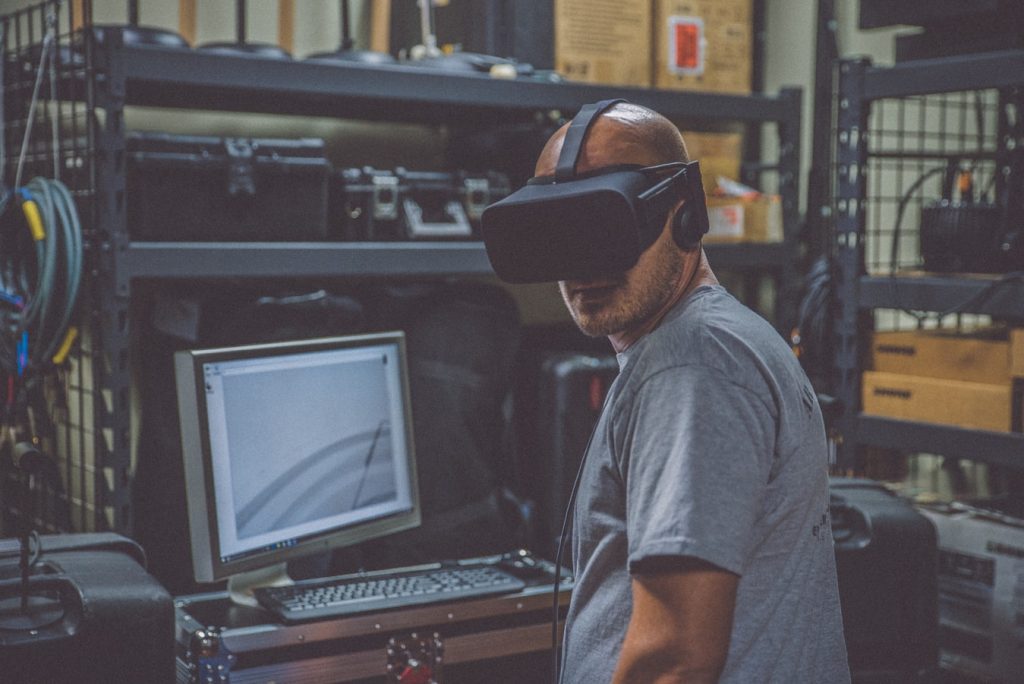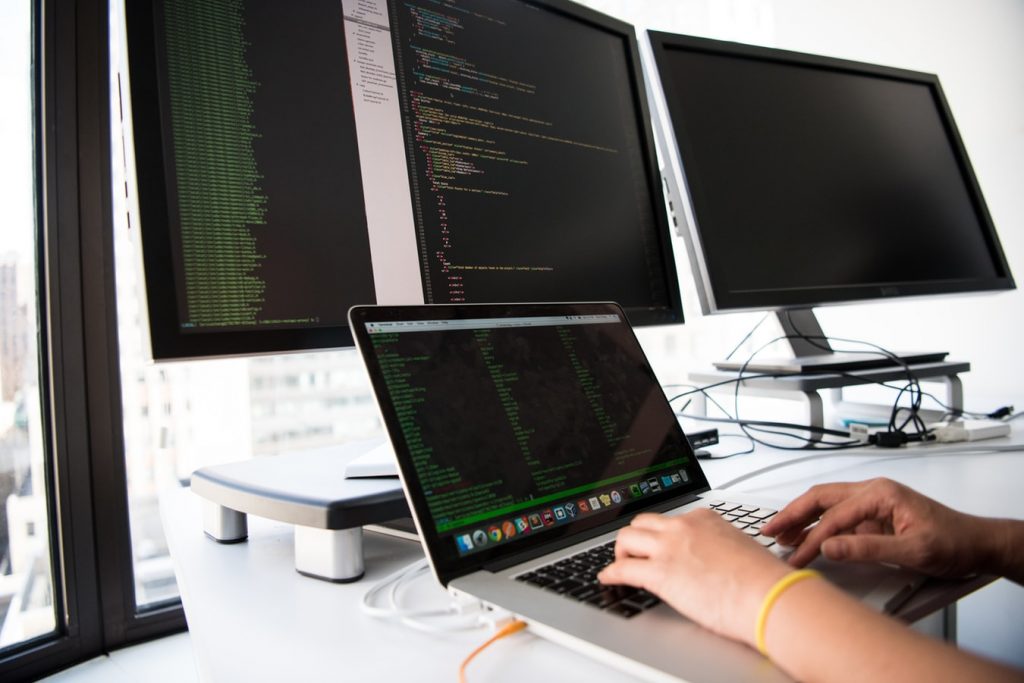Software Development Trends To Pay Attention To In 2020

IT copywriter
Reading time:
The beginning of the year is the best time to recall the lessons of the year 2019 and discuss software development trends that will dominate 2020. Keep reading to learn about trends that we recommend you keep an eye on in the future!
#1 The impact of artificial intelligence on our everyday lives is growing

In 2020, there will be new ways to implement artificial intelligence into businesses. Today, the key players in the industry are Google and Facebook. Google’s TensorFlow and Facebook’s PyTorch have become the most widely used deep learning libraries. Large manufacturers of neural networks will continue to create “model zoos” that allow you to quickly make an AI-driven commercial application based on a ready-made solution. Companies will continue to automate client communications. AI and voice-controlled chatbots will replace simple chatbots.
The research company IDC says that, by 2025, AI will power 90% of new enterprise apps. Neural networks will impact not only businesses but also everyday life. Azoft has already worked on projects at the intersection of art, EdTech, and AI. Our team delivered automation solutions to Proko, a popular educational resource for artists to get art instruction videos. Using machine learning and neural networks, we developed EdTech solutions that analyze and correct students’ drawings automatically. We are certain that neural networks will continue to shape the future of education and art.
#2 Python is getting more popular

Python is taking over the world. The TIOBE Programming Community index which indicates the popularity of programming languages ranked Python as the third most popular programming language after Java and C. According to GitHub’s Octoverse 2019, for the first time, Python outranked Java and became GitHub’s second most popular language.
The report shows that, in the last year, developers collaborated in more than 370 primary languages on GitHub. C# and Shell have risen in the ranks of programming language popularity as well. Dart was by far the fastest-growing language, followed by Rust and HCL.
At the beginning of 2019 GitHub published the ranking of languages by total source code posted. The top leaders were:
- JavaScript
- Java
- Python
- PHP
- C++
- C#
- TypeScript
- Shell
- C
- Ruby
These languages will remain in demand in 2020.
#3 There will be more system integration projects
GitHub in its State of the Octoverse 2019 also noted that software development is, increasingly, a community endeavor as it becomes easier to find and build on work from others around the world. In fact, not only do some of the top open source projects have thousands of contributors, but they’re also dependencies for millions of repositories. Projects like rails/rails, facebook/jest, and axios/axios are used by millions of other repositories.
Our developers also believe that the majority of software development projects are growing out of isolation. Any new project today is commonly integrated and connected with existing projects. At the same time, integrations have become more advanced on the technical side. Software development is no longer only about writing code; it has also become about negotiating with the owners of other projects.
#4 Growth of projects and devices that support VR, AR, and MR

Venture Beat says that, in the near future, the hardware for AR, VR, and MR will improve. Smaller displays with higher resolution will be released. New chipsets for devices will appear. More devices will be able to connect to Wi-Fi-6 routers. All of these factors will improve the data transfer rate. Entering information and managing devices will gradually become more intuitive.
In 2019, the Oculus Quest VR helmet received an update with support for hand tracking without a controller. Such solutions will allow developers to release new conceptual applications and games. The technological advancement of devices will create more realistic user experiences.
In 2020, there will be more gadgets with support for VR, AR, and MR. This will be facilitated by the release of more powerful smartphones with new processors, folding screens, strong sensors, and 5G support. In the coming years, a new category of AR products, holographic screens, will also enter the market.
According to the results of the CES 2020 exhibition in Las Vegas, the VR-Journal portal highlights the trend for creating deep fake videos with virtual people generated using AI. Creating such videos will become customer service. Touch transfer will be one of the new stages in the development of the industry. Now, manufacturers are developing tactile suits and gloves.
AR, VR, and MR will be used more often in healthcare, manufacturing, and education. Businesses will solve specific problems using augmented and mixed reality technologies. For example, creating virtual stores. We developed a virtual fitting room for Leef. Using the AR application, the users try on a 3D model of the watch and see how the watch looks on their hands. With such an app, the retailer shows customers a line of products, promotes new products, and creates the effect of presence.
#5 Billions of devices will be connected to the Internet of Things (IoT)

In the future, every device, item of clothing, and maybe even food will have an IP-v6 address and communicate with everything around it, said Sebastian Trun, a professor of Computer Science at Stanford. The Internet of Things industry continues to grow rapidly thanks to the development of cloud technologies and the connection to the internet of an increasing number of gadgets. According to IDC, the global investment in IoT solutions in 2017 amounted to over $800 billion, and by 2021 it will increase to about $1.4 trillion.
In the summer of 2019, Microsoft introduced the IoT Signals study, which is dedicated to the development of the Internet of Things market. According to the results of the study, 85% of organizations in the world own at least one business project in this area. By 2021, the number of projects in the global IoT market will increase to 94%.
#6 New types of cyber threats will emerge

Hackers will attack state networks more often. The target of criminals is often small organizations that do not have powerful cyber defense, but store valuable data (access to state registers, databases, etc.).
Cloud solutions are becoming the target of hackers. As services develop, they are placed under a larger threat of being hacked. Most of the decisions of large companies, such as Google, are automatically trusted by users, which creates the risk of fraud.
5G networks are attacked. The forecasts of Research and Markets predicts that the 5G market will triple by 2025. Next-generation networks are spreading all over the world. New solutions require special security protection tools. Weak hardware and software protection and the dangers that arise in the production-supply-deployment cycle make 5G networks vulnerable.
AI will be used to create viruses. With open access to standardized libraries and labeled datasets, hackers will use artificial intelligence to create viruses. Gartner has identified areas that require special attention from cybersecurity professionals: protecting systems with AI, using AI to strengthen defense, and preventing the use of AI in attacks.
Experts say that by 2022, about a third of AI-powered cyber-attacks will infect training data, steal AI models, or use competitive samples to attack AI systems. AI technologies that are used to create fake audio and video files are predicted to cause damage to the business in 2020 in the amount of over 250 thousand dollars.
Hackers will crack corporate and personal IoT devices. With the development of the Internet of things, systems connected to the network control physical objects of various sizes, including nuclear power plants. If hackers crack them, they can turn them off or use them for DdoS attacks. Hacking “smart cities” can lead to theft of databases and network congestion due to increased electricity consumption.
According to Kaspersky Lab, in the first six months of 2019, hackers attacked IoT systems over one hundred million times. In the coming years, the number of attacks will only increase. According to a 2017 Trustlook study, 35% of owners of personal IoT gadgets do not change the factory password after purchasing devices. Over 50% of users do not protect devices with antivirus software.
Summing Up

IDC analysts believe that more than half of the cost of ICT will go to digital transformation by 2023. To keep up with large market participants, it is important for IT companies to master the latest technologies, including AI, VR, AR, MR, the Internet of things, and developing programming languages. Also, there is an important upward trend for automation of processes using Al.
The relationship between outsourcing and business will focus more on improving the quality of service and the value of commercial offers, rather than reducing prices. Clients will be able to organize project teams with developers from different countries. Outsourcing companies will work as system integrators.
Competition in the IT market will only intensify. In addition to product quality, the ranking of IT companies will reflect specialization, customer focus, willingness to share risks with partners and the reliability of data protection from cyber threats.
Consider these trends and turn them into your competitive advantage!


Comments